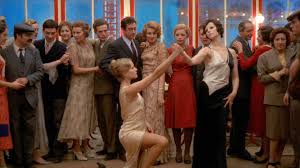DIRECTOR: Bernardo Bertolucci
BOTTOM LINE: One of the most influential films ever made, “The Conformist” tells the story of a sexually repressed gay man who, because of his relationship with a household servant in his youth, desperately wants to conform in society to the point of working for Mussolini’s Fascist secret police.
The film left an indelible impression on the young directors of the New Hollywood of the early 1970s, particularly Francis Coppola’s “Godfather” Trilogy and Paul Scrader’s “American Gigolo” and Mishima.” Cinematographer Vittorio Storaro’s visuals were immensely influential on Gordon Willis and John Bailey, and Schrader used Bertolucci’s production designer, Ferdinando Scarfiotti, as his visual consultant on all his early movies. Using Art Deco, the dominant architecture of the day, as a backdrop to the film’s narrative, the partnership of Bertolucci, Storaro and Scarfiotti changed the look of Cinema forever.

It’s 1938, in Paris, and Marcello Clerici (Jean-Louis Trintignant) leaves his wife Giulia (Stefania Sandrelli) in their hotel room and finalizes his preparations to assassinate his former college professor, Luca Quadri, an anti-Fascist who has fled Italy for safety reasons. From here, the film goes into a series of flashbacks. In one, we see Marcello as a boy being picked up from school by the family chauffeur Lino (Pierre Clementi). Lino is both a Fascist and a pedophile, and he tries to rape Marcello. There is a gun; Marcello shoots Lino and runs away, thinking that he has committed murder. During their visit to Paris from Italy, the two couples have become friendly, with Marcello having a romantic fling with Quadri’s wife Anna (Dominique Sanda) who in turn has a crush on Giulia. The two women have a slow dance with one another, which is another seminal moment in Cinema. Nothing like this had been seen since the days of Marlene Dietrich. From today’s perspective, the scene reeks of the male gaze, but it still packs a punch.
Bertolucci is a contradiction. His tastes were catholic, but he was raised Catholic. And while he revels in the risque value of a lesbian dance, he cannot quite get his head around homosexuality and its perceived relationship to pedophilia and Fascism. The conformist conforms because of his sexuality, and when Fascism collapses, he has nothing left.
Adapted by Bertolucci from the novel “The Conformist” by Alberto Moravia. Oscar nomination for Best Adapted Screenplay.
NOW SHOWING ON AMAZON PRIME, APPLE TV+ AND YOUTUBE
https://thebrownees.net/sixty-five-queer-films-made-under-the-hays-code-1934-1967
https://thebrownees.net/sixty-five-queer-films-made-under-the-hays-code-1934-1967-table-summary
https://thebrownees.net/fifty-two-post-hays-code-queer-films-released-in-the-decade-1967-1976


















